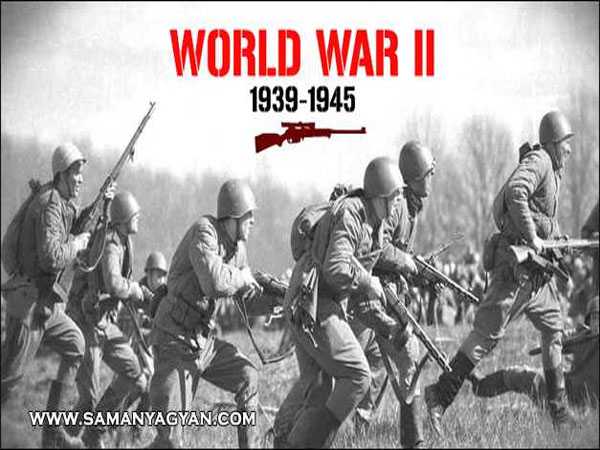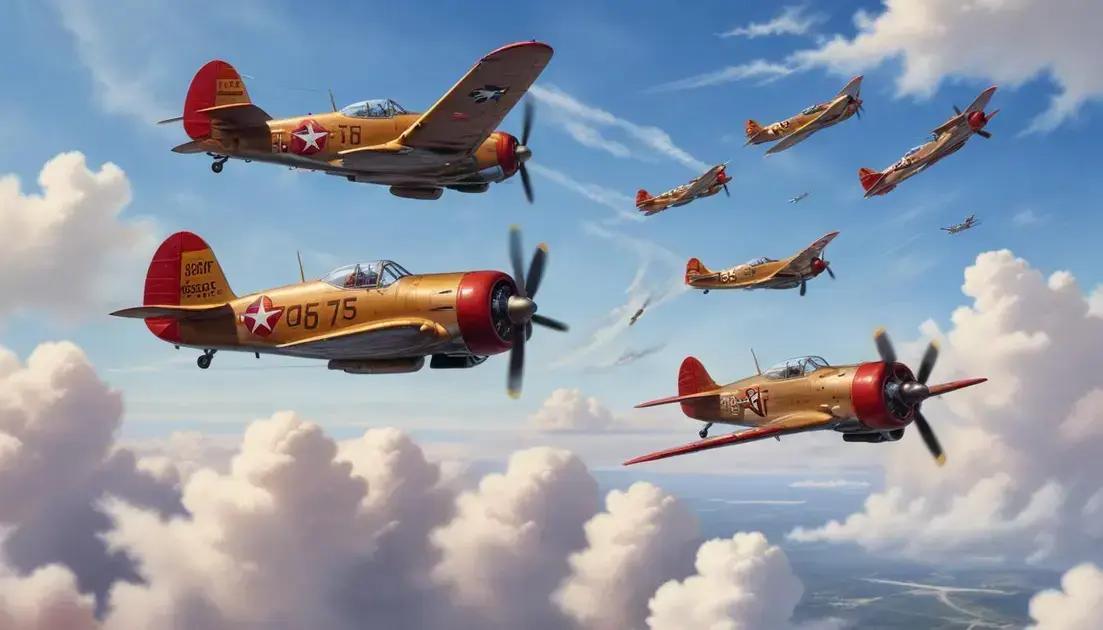
World War II: The Global Conflict That Redefined the 20th Century
World War II: The Global Conflict That Redefined the 20th Century
World War II stands as the most devastating and transformative conflict in human history, fundamentally altering the geopolitical landscape of the 20th century. This global war, spanning from 1939 to 1945, involved virtually every nation on Earth and resulted in unprecedented destruction, loss of life, and social upheaval. As we examine this pivotal period through the lens of a timeless reporter, we uncover the complex web of causes, consequences, and lasting impacts that continue to shape our world today.
The magnitude of World War II cannot be overstated. Unlike any previous conflict, this war truly earned its designation as a world war, engaging multiple continents simultaneously and involving over 100 million people from more than 30 countries. The conflict redefined warfare itself, introducing new technologies, strategies, and unfortunately, new depths of human cruelty. From the mechanized warfare of the European theater to the island-hopping campaigns in the Pacific, World War II history reveals a saga of human resilience, technological innovation, and the ultimate triumph of democratic values over totalitarian regimes.
This comprehensive examination will explore the multifaceted nature of World War II, delving into its origins, major campaigns, technological innovations, global impact, and enduring legacy. Through careful analysis of primary sources, military records, and firsthand accounts, we present a detailed portrait of how this conflict reshaped international relations, accelerated technological advancement, and established the foundation for the modern world order.
The Origins and Causes of World War II
The roots of World War II extend far beyond the immediate events of 1939, tracing back to the unresolved tensions and economic instabilities that emerged from the aftermath of World War I. The Treaty of Versailles, signed in 1919, imposed harsh penalties on Germany, creating a fertile ground for resentment and extremism. The war reparations crippled the German economy, leading to hyperinflation and widespread unemployment that would later facilitate the rise of Adolf Hitler and the Nazi Party. This punitive peace settlement failed to address the underlying nationalist tensions that had contributed to the first global conflict, instead creating new grievances that would eventually explode into an even more devastating war.
The global economic crisis of the 1930s, triggered by the Wall Street Crash of 1929, further destabilized international relations and provided opportunities for aggressive totalitarian regimes to expand their influence. In Germany, the economic hardship allowed Hitler to gain popular support by promising to restore national pride and economic prosperity. Similarly, Japan’s invasion of Manchuria in 1931 and Italy’s conquest of Ethiopia in 1935 demonstrated the weakness of the League of Nations and the international community’s inability to maintain collective security. These early acts of aggression went largely unpunished, emboldening the Axis powers to pursue increasingly bold territorial expansions.
The failure of appeasement policies, most notably demonstrated by the Munich Agreement of 1938, revealed the inadequacy of diplomatic solutions in dealing with totalitarian regimes bent on expansion. British Prime Minister Neville Chamberlain’s declaration of “peace for our time” after allowing Hitler to annex the Sudetenland proved tragically naive. The policy of appeasement, intended to avoid another devastating war, instead convinced Hitler that the Western democracies lacked the will to resist his ambitions. This miscalculation would prove catastrophic when Germany invaded Poland on September 1, 1939, finally triggering the declaration of war by Britain and France.
The ideological dimensions of the conflict were equally important in shaping the war’s character and intensity. The rise of fascism in Germany and Italy, militarism in Japan, and the spread of communist ideology in the Soviet Union created a complex web of competing worldviews that made compromise increasingly difficult. These ideological differences were not merely political but represented fundamentally different visions of human society, individual rights, and national destiny. The Nazi ideology of racial superiority, in particular, introduced a genocidal element to the conflict that distinguished World War II from previous wars and contributed to its unprecedented brutality.
Major Theaters and Campaigns of World War II
The World War II conflict unfolded across multiple theaters simultaneously, each presenting unique challenges, strategies, and consequences that collectively shaped the war’s outcome. The European theater, beginning with Germany’s invasion of Poland, quickly expanded to encompass virtually the entire continent. The German Blitzkrieg tactics proved devastatingly effective in the early stages of the war, allowing Nazi forces to overrun Poland, Denmark, Norway, Belgium, the Netherlands, and France in rapid succession. The fall of France in June 1940 represented one of the most shocking military defeats in modern history, leaving Britain to stand alone against the Nazi war machine.
The Battle of Britain, fought primarily in the skies over the United Kingdom from July to October 1940, marked the first major defeat of German forces and proved that the Nazi military was not invincible. The Royal Air Force’s successful defense of British airspace prevented a German invasion and provided a crucial morale boost to the Allied cause. The heroic efforts of British, Commonwealth, and Free European pilots during this campaign inspired Winston Churchill’s famous declaration that “never in the field of human conflict was so much owed by so many to so few.” This aerial battle demonstrated the critical importance of air superiority in modern warfare and established the foundation for Britain’s continued resistance.
The German invasion of the Soviet Union in June 1941, codenamed Operation Barbarossa, opened the largest and most brutal theater of the war. This massive offensive involved over 3.8 million Axis troops and initially achieved stunning success, advancing deep into Soviet territory and capturing millions of Red Army soldiers. However, the German forces became overextended as winter approached, and the Red Army’s fierce resistance, combined with the harsh Russian climate, gradually turned the tide. The Battle of Stalingrad, lasting from August 1942 to February 1943, became the turning point of the war in Europe, marking the beginning of Germany’s inexorable retreat.
The Pacific theater presented entirely different challenges, characterized by naval warfare, amphibious assaults, and island-hopping campaigns across vast oceanic distances. Japan’s attack on Pearl Harbor on December 7, 1941, brought the United States fully into the war and transformed the conflict into a truly global struggle. The early Japanese advances were swift and comprehensive, conquering the Philippines, Dutch East Indies, Singapore, and Burma while threatening Australia and India. However, American industrial capacity and technological innovation gradually overwhelmed Japanese forces, with decisive naval victories at the Coral Sea and Midway beginning Japan’s retreat across the Pacific.
The complexity of managing multiple theaters simultaneously required unprecedented coordination between Allied forces and represented one of the greatest logistical challenges in military history. The development of combined operations, joint command structures, and integrated supply chains became essential elements of Allied strategy. The success of D-Day, the Allied invasion of Normandy in June 1944, demonstrated the effectiveness of this coordinated approach and marked the beginning of the final phase of the European war. Meanwhile, the island-hopping campaign in the Pacific brought Allied forces increasingly close to Japan itself, setting the stage for the war’s dramatic conclusion.
Technological Innovations and Warfare Evolution During World War II
World War II served as an unprecedented catalyst for technological innovation, fundamentally transforming the nature of warfare and accelerating scientific advancement in ways that continue to influence modern society. The desperate need for military advantage drove nations to invest heavily in research and development, resulting in breakthrough technologies that revolutionized everything from communication and transportation to medicine and manufacturing. The war’s technological legacy extends far beyond military applications, as many innovations developed for combat found civilian uses that transformed post-war society.
Radar technology, initially developed by British scientists, proved crucial in detecting enemy aircraft and ships, providing early warning systems that were essential for defensive operations. The sophistication of radar systems advanced rapidly throughout the war, enabling more accurate targeting, navigation, and battlefield awareness. This technology played a decisive role in the Battle of Britain, allowing RAF fighters to respond effectively to German air raids despite being outnumbered. The development of radar also facilitated the Allied naval campaign against German U-boats, helping to win the crucial Battle of the Atlantic by improving the detection of submarine threats.
The development of jet engines and rocket technology during World War II laid the foundation for the post-war aerospace industry and space exploration programs. Germany’s development of the V-1 flying bomb and V-2 rocket represented the first operational use of jet propulsion and ballistic missile technology, though these weapons came too late to significantly impact the war’s outcome. The capture of German rocket scientists and technology by the Allies after the war directly contributed to the development of intercontinental ballistic missiles and the space race of the 1950s and 1960s.
Perhaps no technological development of World War II had greater long-term implications than the atomic bomb. The Manhattan Project, a massive scientific undertaking involving thousands of researchers and billions of dollars, successfully developed nuclear weapons that ended the war with Japan and ushered in the atomic age. The bombing of Hiroshima and Nagasaki demonstrated the devastating power of nuclear weapons and fundamentally altered international relations, creating a new dynamic of nuclear deterrence that continues to shape global politics. This technological breakthrough raised profound questions about the relationship between scientific advancement and human welfare that remain relevant today.
Medical advances during the war saved countless lives and establishe


